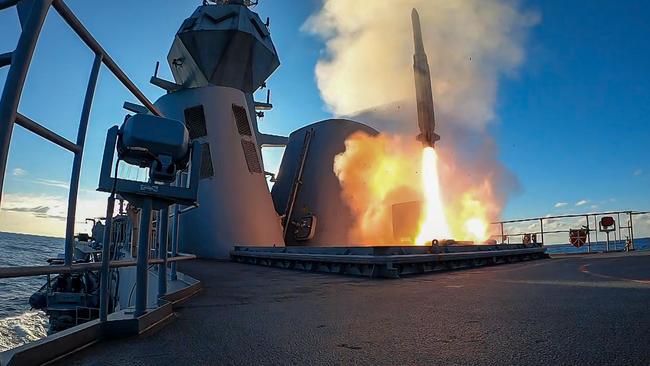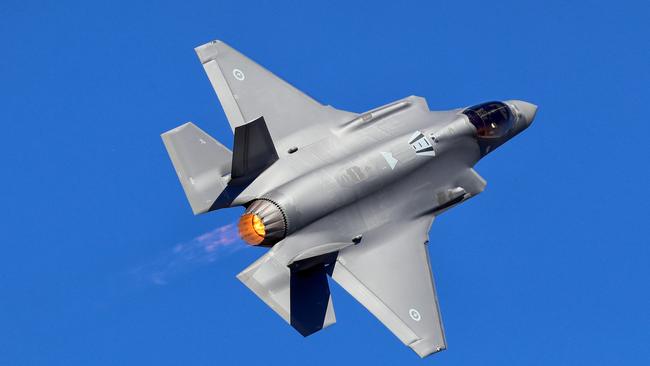
We no longer have decades of assured peaceful times in our region — a view which underpinned the defence belief that we could wait for 20 years for some of the weapons and take the risks involved in designing new vessels and aircraft.
Last weekend, as I was researching my commentary on the cost overruns and cover-ups, China was sending aircraft close to the Pratas islands in the South China Sea, which are controlled by Taiwan. The islands have no permanent residents and are only lightly defended by a Taiwanese garrison, so are vulnerable to attack.
According to the South China Morning Post, China’s actions forced Taiwan to scramble fighters in an emergency response.
Beijing had previously carried out air missions in the region but on Saturday there were eleven planes including eight fighter jets, two nuclear-capable H-6 bombers and an anti-submarine aircraft. China may have been testing the new US President.
Two years ago such an event would have been unlikely but Saturday’s show of force by China underlined that the game has changed.
Australia has based its long-term defence policy on the basis that we had a lot of time before any conflict was likely. In the new environment we need to revamp the long-term timelines that currently see much of our new equipment not becoming operational until the late 2030s and 2040s.
Sadly that becomes a dangerous luxury because we now live in a far more war-prone region.
We undertook three high-risk, long lead time research and development projects: the Joint Strike Fighter/F-35, the submarines and the frigates.
We need to bring together outside and internal advice to work out how to adapt to this new environment.
Such a strategic change is no different to what must happen in corporations when the business environment changes dramatically. And so last week Treasury Wine Estates began to adapt its business to the fact that it can no longer be assured of a major China market; airlines have no choice but to adapt but the COVID-19 environment; and motor makers around the world are reinventing themselves to prepare for electric vehicles.
Changing defence strategies for a new environment is not only essential but makes it politically possible to rectify the mistakes and cover-ups.
The JSF/F35 requires a totally different adaptation to the changes to the submarines and frigates. The JSF is now being delivered and most of the 72 aircraft that have been ordered will be on the ground in the next few years.
But the JSF is facing a major and costly overhaul to try to overcome the multitude of deficiencies that the Americans have isolated. We need an aircraft to fill some of the gaps.
I am not qualified to make a recommendation but readers are suggesting we look at the F-15. Air Power Australia which, sadly, has been being right in its JSF warnings and war danger alerts, believes we should work very hard in a dialogue with the Americans to convince them to use the JSF assembly lines to produce a revamped F-22, which is the pride of the American Air Force, and to make these aircraft available.
Sadly there are only around 60 of them available for combat duty because production has been stopped.

The submarine and frigate projects underline the dangers for a small nation to basically design new weapons in the hope that they will do the job.
Not only are the costs and risks enormous but, even if the designs are successful, by 2040 vastly different weapons systems will have been developed.
Given the immediate danger we are much better to buy proven equipment and hopefully develop our parts manufacturing industry. At the same time, we need to upgrade our existing vessels because that’s the fastest way to have at least some worthwhile defence in the current decade.
That was broadly what we planned to do with frigates but we got sucked into virtually designing a new vessel. We have three existing frigates which need to be upgraded and then we need to go back to our original plan and select a fully operational frigate.
The Americans have chosen the Italian frigate and the project involves a fraction of the Australian costs and 98 per cent local US content. The combination of the Collins upgrade and the purchase of, say, the Italian frigate will give us defence in the current decade, although there are warnings that technology advances are making frigates less effective than they were in previous decades.
When it comes to submarines we have six Collins class vessels which need to be upgraded. Then we need to select an already proven submarine and in the mix we need to at least consider going nuclear, which was the navy’s original preference.
The US nuclear submarines may not be what we require and, in any event, the US is reluctant to share its technology, but there are other alternatives if we want to go that way.
For the longer term we need to be watching the developments in molten salt-cooled nuclear vessels that are linked to an industry that can produce abundant power for Australia.
None of these decisions are easy and the first step is to recognise that we have problems in depending on new designs and then recognising the changed defence environment.





Australia’s three problem defence equipment projects have an obstacle even more serious than their projected $300bn plus outlay: the low immediate war risk assumptions behind the projects have proved to be wrong.